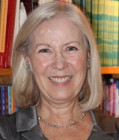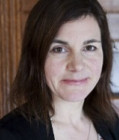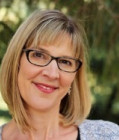Evolving Norms and the Demand for Equal Female Inclusion in Governing Cabinets
Connect with the author
“Because it’s 2015.” That was the pithy response given by Justin Trudeau, newly elected Prime Minister of Canada, to a question about why he placed a priority on “a cabinet that was gender balanced.” For Trudeau, appointing an equal number of men and women to his cabinet of governing ministers seemed uncontroversial. It was “a pleasure,” he said, to present “a cabinet that looks like Canada,” because “Canadians elected extraordinary Members of Parliament from across the country and I am glad to have been able to highlight a few of them in this cabinet here with me today.”
Trudeau’s cabinet was the first one with gender parity ever constructed by a North American government. How is this possible? How did Trudeau manage to find fifteen women to serve as ministers in his first government – enough women to staff the entirety of the smaller U.S. presidential cabinet – while during the same era in the United States, President Barack Obama only found four women out of 318 million people to nominate for his initial cabinet?
Why Wealthy Democracies Move toward Parity Cabinets
At least three factors allow – and encourage – the emergence of parity cabinets in wealthy democracies: an ample supply of candidates; few veto points to block appointments; and growing normative pressure to bring women into national cabinet posts.
For cabinet appointments, “supply” is not an obstacle to achieving gender parity. Across all parties, wealthy democracies have large numbers of highly educated, politically elite women who could serve in cabinets as ministers or department secretaries. After all, the actual numbers necessary to staff an entire cabinet are very small – as few as fifteen in the United States and two dozen in Sweden. Unlike party leaders searching for potential female candidates, heads of government do not need to find hundreds of women to serve in their cabinets. The requirement of small numbers makes it relatively easy for prime ministers and presidents to appoint equal numbers of men and women as ministers or secretaries.
Advancing women as election candidates requires party nominations and enough voter support to ensure female victories in campaigns against opponents. By contrast, hardly any bottlenecks or veto points stand in the way of appointments of women to cabinet posts by heads of governments. In Sweden, the Prime Minister appoints the cabinet, with no additional approval required, because the Swedish monarch and parliament do not need to approve. Even in the United States, where a majority of Senators must consent to cabinet appointments, presidential nominees are almost always confirmed. In Germany, where the President theoretically has a voice in ministerial appointments, effective power to select rests with the Chancellor.
This is not to argue that prime ministers and presidents can appoint whomever they wish to their cabinets. Of course, regional, racial, ethnic, religious, political, and other representational considerations come into play in the intricate process of cabinet construction. Nonetheless, an incoming head of government can, if she or she wants to do so, quickly and effectively establish a gender parity cabinet with relatively little opposition. Western heads of government have done just that, literally overnight. Italy achieved such a cabinet in 2014, when Prime Minister Matteo Renzi filled eight of the sixteen ministries with women. France has had a gender parity cabinet since 2014, after the election François Hollande as President (and even his predecessor, Nicolas Sarkozy, appointed many women, although short of gender parity). Following the 2008 parliamentary elections in Spain, Prime Minister Jose Zapatero presented a cabinet with a female majority. And for at least a decade, Sweden has had gender parity, near-parity, or female majorities in its cabinets, regardless of which political party runs the government.
A final force pushing toward gender parity is pressure from women organized inside and outside political parties. Women’s groups now routinely invoke what amounts to a new international norm that women have to be present in cabinets. Wealthy democracies can no longer have men-only cabinets, or, as we have written elsewhere, a prime minister can no longer “over-select from just half the population” in appointing a cabinet. Having women in the national cabinet has become crucial and conventional – even in the United States, where women have now served in every presidential cabinet since 1993, under Democratic and Republican presidents alike. Indeed, having just one token female in a cabinet is no longer enough. Public pressure brought by organized women, and amplified by mass media coverage, forces heads of government to defend the gender composition of their cabinets. In the United States, for instance, the Coalition for Women’s Appointments was launched to monitor President Bill Clinton’s promise to appoint a cabinet that “looks like America,” and years later, President Barack Obama’s cabinet appointments have been closely scrutinized. At points, Obama faced criticism for women’s under-representation, with commentators going so far as to suggest that his “inner circle could become something of a boys’ club.”
The Next U.S. Cabinet
Where does this facet of the overall campaign to bring women more equally into U.S. government stand in yet another presidential election year? Many observers and politically active women certainly believe that the next U.S. president should be able to match Canadian Prime Minister Trudeau’s record of full parity in cabinet appointments. Given that only fifteen people serve as heads of federal departments with representation on the President’s cabinet, a new president of any party should be able to find seven or eight outstanding female cabinet nominees and secure Senate approval.
Given evolving international norms about women’s inclusion in cabinets, we can anticipate a high level of attention to how many women the next U.S. president nominates. After all, the U.S. neighbor to the north has set a new standard sure to put extra pressure for gender equity in U.S. cabinets. What is more, if the next U.S. president does, indeed, nominate seven or eight women to serve in the cabinet, he – or perhaps she – will have an answer ready at hand when asked why this was the right course to follow: “Because it’s 2017.”


